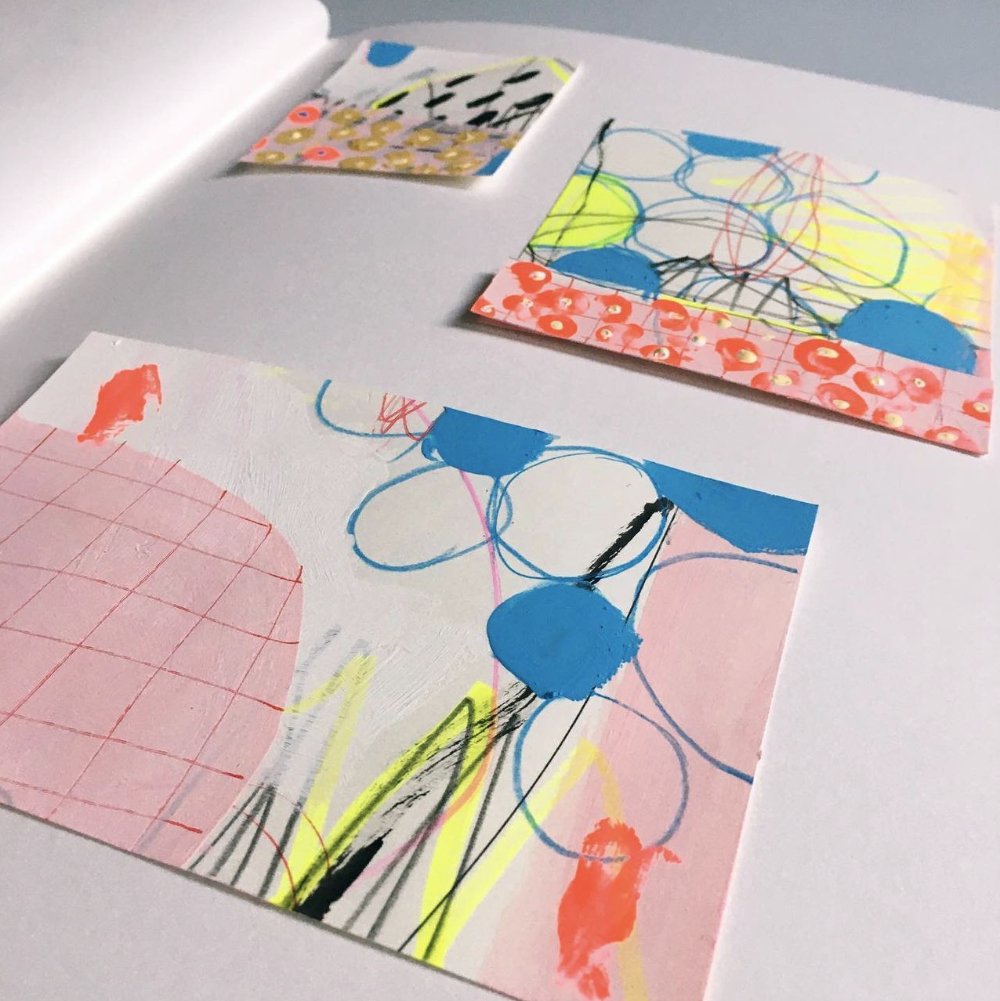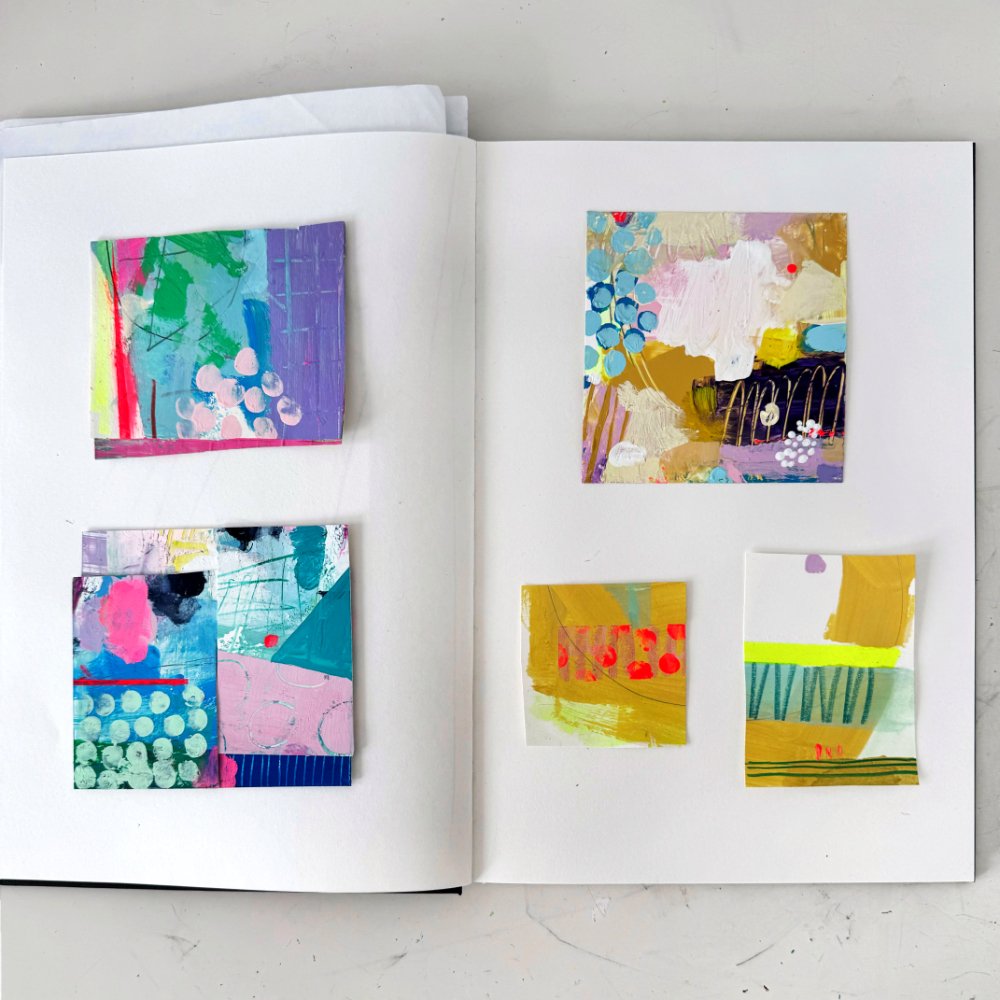How to Use Your Sketchbook to Explore Your Unique Style
Finding your unique style as an artist is like opening a treasure chest of creativity. It involves self-discovery, trying new things, and embracing creative confidence. Your sketchbook is a great tool for this journey, providing a safe space to explore freely. Here’s how to use your sketchbook to grow and express your artistic voice.
ONE: Make Your Sketchbook a Judgment-Free Zone
The first challenge is to allow your sketchbook to be imperfect and embrace the messiness of capturing raw ideas, trying out new things, and experimenting.
Resist prettyfying every mark and view it as a playground where you can explore freely and make mistakes.
It’s for your use, a working-out space, where you can give yourself permission to follow your curiosities and see where they lead. By following your curiosity and interests, you can discover what resonates with you.
Let go of perfection, as perfection is an illusion and temporary, and embrace the action of perfecting instead.
Read more about perfection here: Stop The Perfection and Aim For ‘Practice Makes Progress’ Instead.
TWO: Experiment with Different Marks and Techniques
A sketchbook is a great space to explore mark-making and different techniques to develop your unique visual language.
The type of marks you use are the building blocks of your artwork. Part of the journey of becoming an artist is finding the tools, materials, and marks that represent you and what you wish to express.
Artists may use the same subject matter for inspiration, but it’s how the materials are used and applied that brings about the individuality, and where viewers can recognise an artwork as yours.
Use your sketchbook to try new approaches, such as:
Line: Thick or thin, light or heavy, smooth or jagged, smudged or clean.
Shapes: Organic or structured, natural or industrial, small or big.
Patterns: Chaotic or even, dense or spacious, delicate or bold.
Textures: Heavy or smooth, 3D or flat, loose or controlled.
Mediums: Watercolor, acrylics, pastels, oils, markers.
Read more about mark-making here: What is mark-making and how is it important to your artwork?
THREE: Dive into the Wonderful World of Colour
Your sketchbook serves as an inspiring space where you can freely experiment with colour combinations and palettes. The way you approach and use colour can be a defining and essential element of your unique artistic style.
Colour plays a significant role in influencing our mood, behaviours, and even decision-making processes, and this phenomenon is well-documented through the principles of colour psychology.
Take advantage of your sketchbook to explore and experiment with:
Value: How light or dark the colour is
Intensity: How bright and clear or dull and muted the colour is
Temperature: Cool, warm, or monochrome
Palettes: Putting value, intensity, and temperature of colours together in harmony allows you to create stunning colour combinations that set the mood and tone for your artwork.
By using colour with intent and thoughtfully considering these elements, you can enhance the emotional impact of your pieces, inviting viewers to connect more deeply.
FOUR: Play with Concepts and Themes
Your unique voice and perspective often shine through the subjects or themes that you are naturally drawn to exploring.
It communicates a great deal about who you are and your personality to the viewer, allowing them to understand better and relate to you and your work.
Use your sketchbook to:
Capture Inspiration: Make sure to note down any initial ideas that pop into your mind as soon as they arise, so you don’t forget them later on. Collecting these thoughts and inspirations helps to hold them all in one place for your future reference.
Explore Interests: Draw things that captivate you, e.g., nature, objects, buildings, people, or abstract patterns.
Develop Series: Pick a theme and create variations, such as several interpretations of a single subject, concept, or emotion.
Make Notes: What does each idea mean to you, how can it be developed further, or how does it connect to your artistic identity?
FIVE: Reflect on Your Work
Reviewing your sketchbook regularly can reveal various patterns, personal preferences, and emerging elements that contribute to the development of your unique artistic style. This practice provides valuable insights into your creative practice.
Look for:
Recurring Themes: Are there subjects you return to often?
Marks and Techniques: What type of marks do you use as your visual language?
Colour Palettes: What colour palettes are you drawn to?
Preferred Media: Which tools and techniques do you gravitate toward?
Emotional Impact: What feels most "you" in your sketches?
Embrace the Process
Your sketchbook is more than just a collection of doodles and sketches —it’s a reflection of your evolving creative practice, whether it leads to success or a mess, it all contributes to your growth as an artist. Finding your voice is an ongoing process as you continue to evolve as a person.
By using it as a tool for exploration and discovery, you’ll uncover the various elements that magically come together to create your unique artistic style.
So, go ahead and open your sketchbook and let your creativity flow freely onto the pages!





